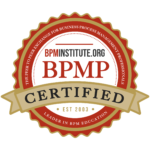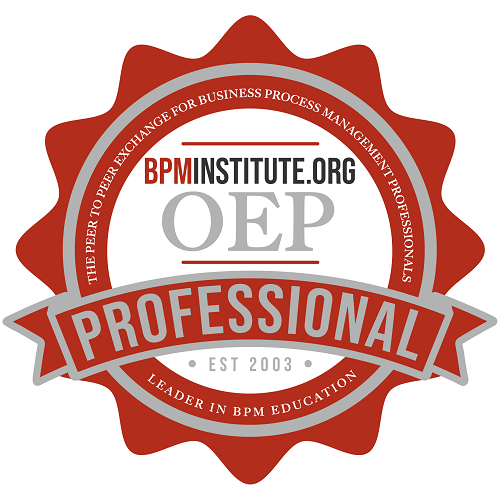Given that operational excellence (Op Ex) was built on a solid foundation of total quality management principles, it’s a bit surprising that as many as two thirds of Op Ex programs fail to meet expectations. While there are many reasons accounting for the failure of enterprise wide Op Ex programs, the following are arguably the top four in my experience.
Lack of Purpose
Whenever an organization launches an Op Ex program just because competitors or allies are doing it – it can be problematic. For success, it’s important that there be a clear purpose in launching Op Ex which includes a strong call to action and a compelling case for change. Over two decades ago, Treacy and Wiersema made a strong case for organizations to view Operational Excellence as commitment to delivering a combination of price, quality, and ease of purchase and service that no other organization in their market or industry can match.[1] Clarity of purpose is just as fundamental to success as a clear strategy. Answer the following questions to check whether your organization has a clear purpose for its Op Ex program.
- To what extent is there as shared understanding of the “raison d’être’ for your Op Ex program by the members of your leadership team?
- To what extent is your Op Ex program expressed in terms that people at various levels throughout the organization can understand?
- To what extent is the Op Ex roll out based on a compelling case for change?
Wrong Focus
Far too many so called Op Ex programs focus mostly on cost reduction by applying a set of tools such as Lean or Lean Six Sigma. Any organization intent on delivering a combination of price, quality, and ease of purchase and service that no other organization in their market or industry can match needs to focus first and foremost on improving customer experience. Best in class companies understand that when there is a clear emphasis on compressing cycle time for customers and improving quality – then costs are automatically driven out. A balanced focus on delighting customers and reducing costs is central to success with Op Ex. Answer the following questions to check whether your organization has the right focus for its Op Ex program.
- Do you have a concise and current customer journey map or model? • What picture dominates the thinking of your leadership team – the org chart or the customer journey model?
- What metrics dominate the thinking of your leadership team: actual to budget, critical to customer or a combination?
- What are the top of mind goals for the majority of your Op Ex process improvement programs: cost reduction, critical to customer or a combination?
Wrong Approach
Success with Op Ex requires attention to cross functional processes. Yet, many organizations choose to implement an Op Ex program along departmental lines. This typically results in improving relatively small processes inside of departmental boundaries and leaving a lot of money on the table by failing to address the large, end to end processes that truly create value for customers. You know you may have a problem with the approach chosen to implement Op Ex when people talk more about tools and methods than results. Answer the following questions to check whether your organization has the right approach for its Op Ex program.
- To what extent does your Op Ex program focus on a few, large, cross functional process improvement projects?
- How effectively does the Op Ex program formally use Steering Teams to provide guidance and governance for large process improvement projects?
- How is the IT group involved in large projects?
- To what extent are there visible recognition programs for the groups of people who create customer value through process improvement?
Lack of Attention to People
Many companies recognize the need to shift culture but then complain about the difficulty of changing it. There’s a timeless one-liner by John Seely Brown, “Processes don’t do work – people do!” In other words, organizations intent on shifting culture need to pay attention to the people who do the work. That involves recognition systems to promote cross department collaboration; cross training and building change management into projects from the get go. Answer the following questions to check whether your organization is paying sufficient attention to people in its Op Ex program.
- To what extend does your Op Ex program inspire people from the boardroom to the lunchroom?
- To what extent do your people support the case for change for the major Op Ex initiatives?
- To what extent are your IT systems designed such that they make best use of knowledge that people doing the work possess?
- To what extent are there visible recognition programs for the groups of people who create customer value through process improvement?
Why is your organization interested in Op Ex? Is it that profits are beginning to slip, increasing competitive threats, or compliance related pressures? Whatever the reason, consider the following to increase the chances of success for your Op Ex program:
- Have a clear purpose for Op Ex that emphasizes customer value creation, communicate it often and broadly!
- Ensure that the primary focus of your Op Ex program is clearly upon delighting customers. Measure what matters to customers and create balance across customer value creation and cost reduction!
- Adopt the right approach by taking improvement action of the critical few, large, end to end processes that truly create value for customers!
- Pay attention to people from the get go.
We hope that these four areas will help increase the odds of success with your Op Ex program.
[1] Treacy, Michael and Fred Wiersema, The Discipline of Market Leaders – Choose your Customers, Narrow your Focus, Dominate your Market”, Basic Books, 1995

















